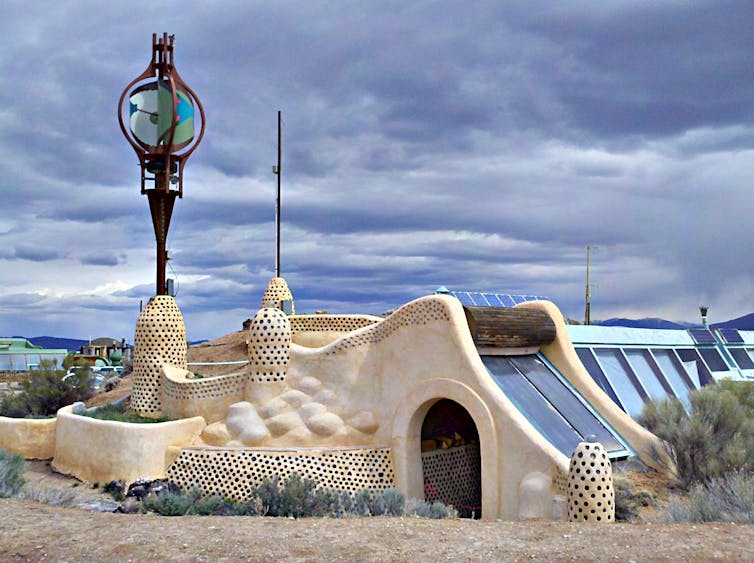Warning: spoilers for Furiosa: A Mad Max Saga ahead.
Since the first trilogy of films in the 1980s, the Mad Max saga has been a staple of post-apocalyptic fiction, with the harsh desert of the Australian outback the perfect stage for an Earth ravaged by ecocide.
The marauding gangs of feral warlords that the films are famous for, with their dieselpunk aesthetic (a combination of petrol-based machinery and a retro-futurist sensibility), conjure the kind of kill-or-be-killed society that English philosopher Thomas Hobbes once imagined of humanity’s distant past.
It’s refreshing then that the newest instalment in the series, Furiosa: A Mad Max Saga, gives a fleeting glimpse of the alternative: utopian societies that could exist alongside – or perhaps, instead of – the nasty, brutish and short life of a post-collapse world.
The titular Furiosa is a young girl at the start of the film who grows into the battle-hardened feminist icon (played by Anya Taylor-Joy) from director George Miller’s Fury Road, released in 2015. Furiosa is seen at the outset of the new film in her first home, “The Green Place”.
We know from Fury Road that this home is eventually spoiled, but at the beginning of Furiosa, we get a hint of what sort of society it was: lush vegetation, bountiful fruit, careful women woodworkers and renewable energy supplied by wind turbines and solar panels. It appears in one sweeping shot, but it is enough to evoke utopian fantasises at odds with the rest of the film’s setting.
If the hyper-masculine dieselpunk of Mad Max is how we’re used to imagining the world after some civilisation-ending catastrophe, The Green Place of Many Mothers is a different vision of the future entirely – one that has theorists and advocates in the real world.
The first solarpunk film?
The solarpunk movement has been gaining traction online for some years now. It is characterised, as the name would suggest, around the Sun as a form of free, abundant energy and, more metaphorically, a source of hope.
Solarpunk offers optimism in the midst of climate catastrophe by saying we have the tools to build a sustainable, technologically able and democratic future. It has even spawned actual urban policy.
Aesthetically, a solarpunk environment is a mixture of greenery and renewable-powered technology, managed through a radical democracy that is less parliamentary and more sociocratic, in that it relies less on voting and more on discussion and consensus.
Ideologically, solarpunk is inherently ecofeminist. That means, according to French author and activist Françoise d'Eaubonne, it acknowledges that humanity’s relationship with the environment is one of dominance, and that a more just and sustainable world requires replacing this with stewardship and care.

While the Green Place is seen only fleetingly, it haunts the rest of the story. A young Furiosa, played by Alyla Browne, is captured by the tyrannical warlord Dementus (played like a pantomime villain by Chris Hemsworth), on whose orders Furiosa’s mother is tortured and killed.
Furiosa embarks on a quest of revenge, disguised as a boy while among Dementus’s followers in order to escape abuse. Women are rarely seen in these warlord societies, and when the audience is introduced to them, they are kept behind a vaulted door. Their sanctuary may be safer than the surrounding landscape, but it is essentially a prison in which they are forced to reproduce male fighters.
Fury Road was widely viewed as a feminist film. Furiosa indicates that Miller sees the essence of the Mad Max world in its very masculine fight for resources (oil, water, food, milk and fertile women).
If the first trilogy showed the despair that kind of social system creates, the narrative and aesthetics of Furiosa show that perhaps the resources are still available in abundance, and if allocated differently, dystopia is not inevitable.
Furiosa: A Mad Max Saga challenges viewers to envision a world where humanity can rise above its basest instincts and build a more just and sustainable future.

Don’t have time to read about climate change as much as you’d like?
Get a weekly roundup in your inbox instead. Every Wednesday, The Conversation’s environment editor writes Imagine, a short email that goes a little deeper into just one climate issue. Join the 30,000+ readers who’ve subscribed so far.

